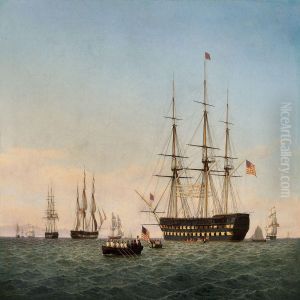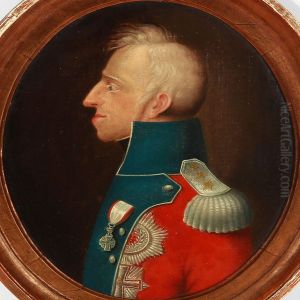C.W. Eckersberg Paintings
Christoffer Wilhelm Eckersberg was a pivotal figure in Danish painting, born on January 2, 1783, in Blåkrog in the Duchy of Schleswig (now part of Denmark). He is often referred to as the father of Danish painting for his substantial contribution to the Danish Golden Age in the early 19th century. Eckersberg's influence extended beyond his own works through his teaching at the Royal Danish Academy of Fine Arts in Copenhagen, where he educated a generation of artists who would continue to shape Danish art.
Eckersberg showed an early interest in art, which led him to Copenhagen in 1803 to pursue his education. After studying under Christian August Lorentzen, he enrolled at the Royal Danish Academy of Fine Arts. His talent was recognized early on, and in 1803 he was awarded a small silver medal, followed by a large silver medal in 1805, and finally the gold medal in 1809 for his painting of 'The Sleep of Endymion'. This accolade earned him a scholarship for travel studies, allowing him to venture to Paris and Rome to further his education. It was during his stay in Rome, from 1813 to 1816, that Eckersberg developed his characteristic style, marked by a clear, light palette and precise observation, which was significantly influenced by the works of the French neoclassical painter Jacques-Louis David and the landscapes of Claude Lorrain.
Upon his return to Copenhagen in 1816, Eckersberg became a member of the Academy and began teaching in 1818. His approach to teaching was revolutionary; he insisted on the importance of nature study and plein air painting, encouraging his students to seek inspiration from the real world. This was a marked departure from the previous emphasis on historical and mythological subjects. Eckersberg's landscapes, seascapes, and cityscapes are noted for their serene, harmonious quality, and meticulous detail, reflecting his deep connection with the natural world. His maritime paintings are particularly celebrated, capturing the light and atmosphere of the sea with unprecedented realism.
Throughout his career, Eckersberg also painted portraits and historical scenes, but it is his landscapes and maritime paintings that have left a lasting impact on Danish art. His works are characterized by an attention to detail and a clarity of light that was innovative for his time. Eckersberg's legacy is not only in his own artworks but also in his influence on the next generation of Danish painters, including Christen Købke and Wilhelm Marstrand, who would carry forward the ideals of the Danish Golden Age. Christoffer Wilhelm Eckersberg passed away on July 22, 1853, in Copenhagen, but his contributions to the Danish art scene continue to be celebrated to this day.

